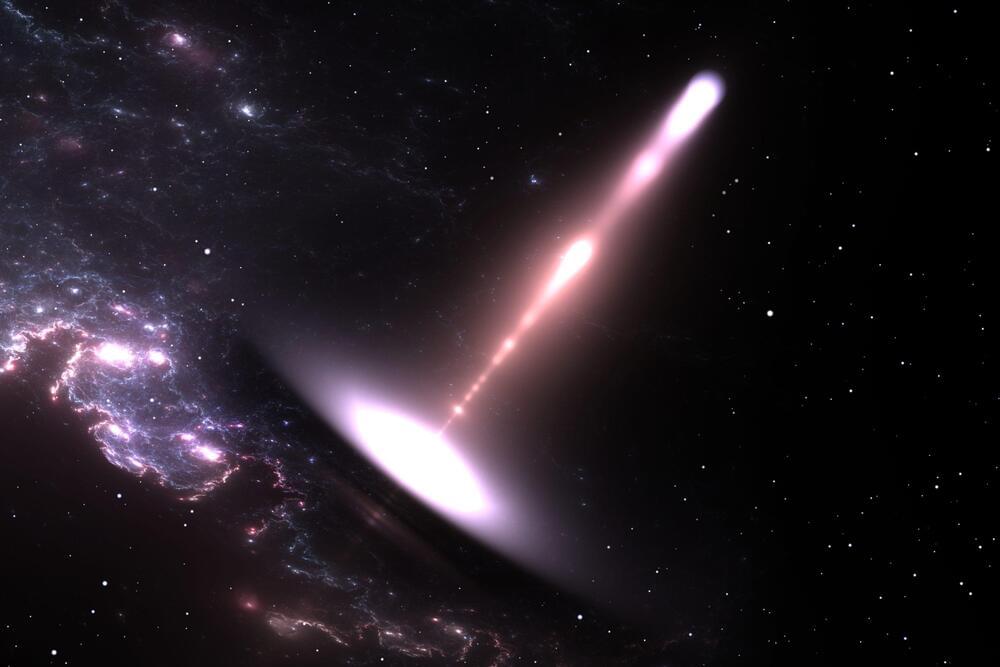Nov 29, 2022
Hear “Light Echoes” From a Black Hole
Posted by Shubham Ghosh Roy in category: cosmology
Scientists have made it possible to listen to the light echoes of a black hole by turning astronomical data into souns.

Scientists have made it possible to listen to the light echoes of a black hole by turning astronomical data into souns.
An international team of researchers are suggesting that our understanding of the origins of our universe may need some updates.
As detailed in a new paper published this week in The Astrophysical Journal Letters, they say the universe may have begun with a “Big Bounce” rather than a Big Bang.
In other words, the cosmos may have been born following of the end of a previous cosmological phase — a bounce — and not the result of space-time inflating exponentially into existence.
Researchers have proposed what’s perhaps the most exotic explanation to date for the source of the universe’s seed magnetic field: cosmic strings.
Start at the Big Bang…
“The map of the observable Universe” takes viewers on a 13.7-billion-year-old tour of the cosmos from the present to the moments after the Big Bang.
As well as admiring beautiful pictures of space, you can also listen to those pictures via sonifications. These take images and translate them into eerie sounds to illustrate the wonderful and strange phenomena of our universe. NASA’s latest sonification illustrates the rings of X-rays that have been observed echoing around a black hole in the V404 Cygni system.
The sonification was made using data from NASA’s Chandra X-ray Observatory and Neil Gehrels Swift Observatory, both of which look in the X-ray wavelength. The data from the optical wavelength come from the Pan-STARRS telescope in Hawaii. Taken together, you can see how the X-ray bursts propagate outward from a central point which is the black hole. The black hole itself remains invisible, as it absorbs all light.
However, even though black holes are themselves invisible, the material around them can glow brightly. As material like dust and gas is attracted to the black hole due to gravity, it joins into a swirling disk around the black hole called an accretion disk. This material rubs together and creates heat due to friction, and can become so hot that it glows.
If wormholes in space exist, they look a lot like black holes from a particular angle, physicists claim, raising the possibility we’ve seen examples of this long-sought phenomenon without knowing it.
For something that emits no light that we can detect, black holes just love to cloak themselves in radiance.
Some of the brightest light in the Universe comes from supermassive black holes, in fact. Well, not actually the black holes themselves; it’s the material around them as they actively slurp down vast amounts of matter from their immediate surroundings.
Among the brightest of these maelstroms of swirling hot material are galaxies known as blazars. Not only do they glow with the heat of a swirling coat, but they also channel material into ‘blazing’ beams that zoom through the cosmos, shedding electromagnetic radiation at energies that are hard to fathom.
NASA’s James Webb Space Telescope has peered into the chaos of the Cartwheel Galaxy, revealing new details about star formation and the galaxy’s central black hole.
Webb’s powerful infrared gaze produced this detailed image of the Cartwheel and two smaller companion galaxies against a backdrop of many other galaxies. This image provides a new view of how the Cartwheel Galaxy has changed over billions of years.
The Cartwheel Galaxy, located about 500 million light-years away in the Sculptor constellation, is a rare sight. Its appearance, much like that of the wheel of a wagon, is the result of an intense event – a high-speed collision between a large spiral galaxy and a smaller galaxy not visible in this image. Collisions of galactic proportions cause a cascade of different, smaller events between the galaxies involved; the Cartwheel is no exception.
Physicists say they’ve found evidence in data from Europe’s Large Hadron Collider for three never-before-seen combinations of quarks, just as the world’s largest particle-smasher is beginning a new round of high-energy experiments.
The three exotic types of particles – which include two four-quark combinations, known as tetraquarks, plus a five-quark unit called a pentaquark – are totally consistent with the Standard Model, the decades-old theory that describes the structure of atoms.
In contrast, scientists hope that the LHC’s current run will turn up evidence of physics that goes beyond the Standard Model to explain the nature of mysterious phenomena such as dark matter. Such evidence could point to new arrays of subatomic particles, or even extra dimensions in our Universe.
Confusing? It may sound so, but it isn’t actually. What Benini and Milan have done is apply the theory of the holographic principle to black holes. In this way, their mysterious thermodynamic properties have become more understandable: by focusing on predicting that these bodies have high entropy and looking at them in terms of quantum mechanics, which allows us to describe them as a hologram: they have two dimensions, in which gravity disappears, but they reproduce an object in three dimensions.
But there’s more. Much more.
According to the authors of the new studies, this is only the first step towards a deeper understanding of these cosmic bodies and the properties that characterize them when quantum mechanics intersects with general relativity.